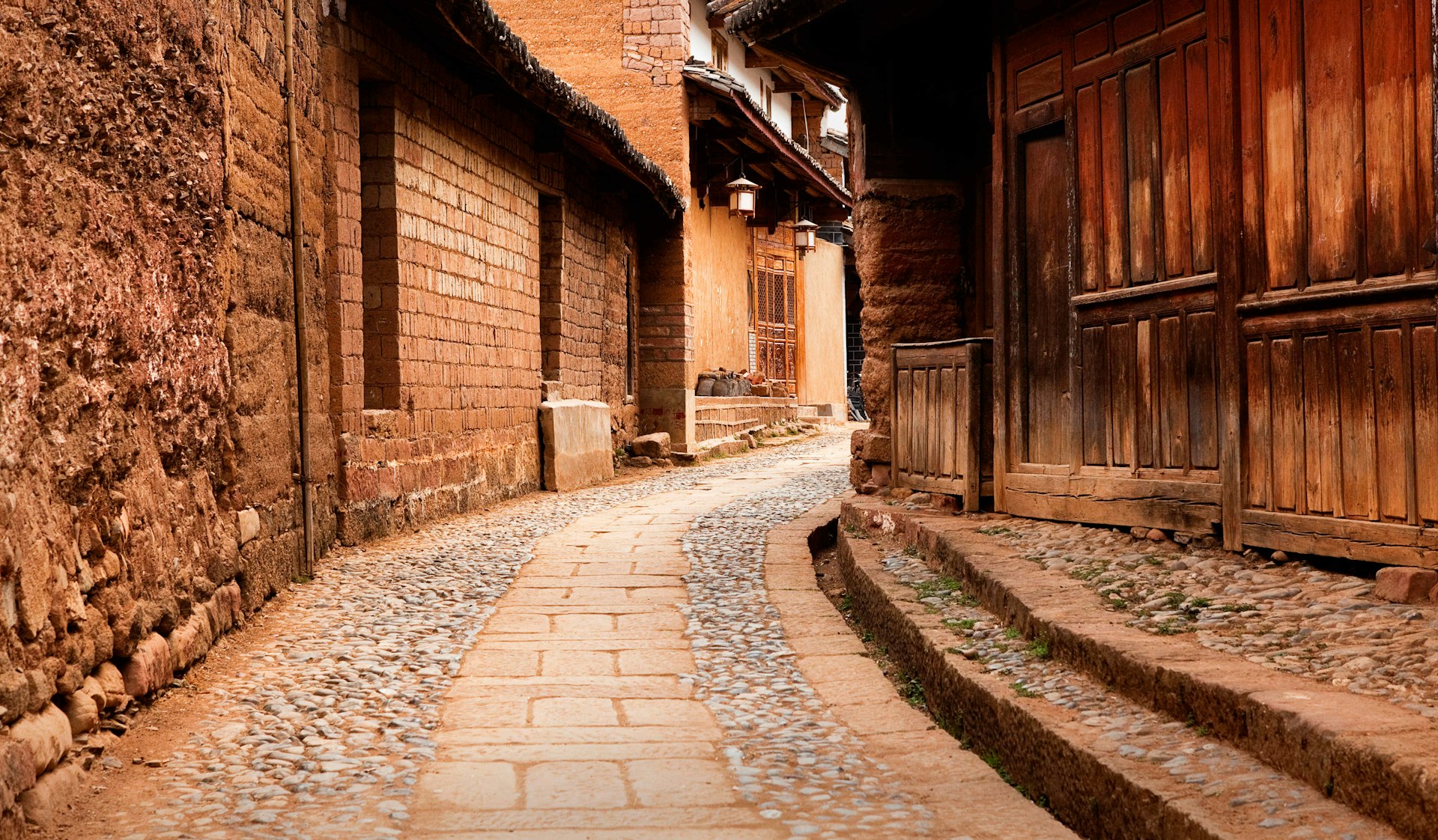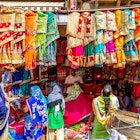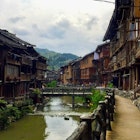A journey to China’s southwest province of Yunnan is a journey into the colourful cultures of the region’s Bai, Yi and Naxi people, labyrinthine and historic old towns in the shadow of snow-capped peaks, and flavour-packed street food and local markets.
Yunnan is a popular region for visitors, especially with Chinese tourists, so the following places are recommended for their winning combination of all the best aspects of the region but with smaller crowds.

Shaxi
Sitting in a fertile river valley surrounded by mountains, the ancient town of Shaxi was an important stop on China’s fabled Tea Horse Road: tea caravans borne by horses, mules and yaks negotiated a spidery network of trails through jungle and mountains to link southwest China with India via Tibet. Sugar, salt, and the tenets of Buddhism and Christianity were also transported by merchants, monks and missionaries, and Shaxi’s long-established Friday morning market is still the region’s most important trading occasion. Bai people from nearby valleys are joined each week by Yi villagers travelling from more remote mountain settlements, and Shaxi’s arcing main street is packed with buyers and sellers grabbing a quick breakfast of noodles or steamed buns before settling down to essential negotiations.

In Shaxi’s old town around Sideng Jie, centuries-old mudbrick houses frame narrow laneways, and the steady but inevitable gentrification that produces cafes, guesthouses and boutique hotels is, at least for now, tempered by a sleepily authentic ambience where horse-riding Shaxi cowboys can still be seen carefully negotiating the downhill path to the town’s main square. Ancient trees bookend the square’s ancient heritage structures, and the local police relaxing in the shadow of the colourful Xingjiao Temple seem as laid-back as Shaxi’s sun-loving cats and lazy dogs.
For a taste of traditional Bai food, seek out Orange Restaurant on Sideng Jie’s square, popular with Chinese and foreign visitors (the English menu probably helps).
Baisha
Courtesy of direct flights from China’s eastern seaboard, Lijiang is an incredibly popular destination for domestic travellers – tens of millions visit the old town warren of souvenir shops, boutique inns and karaoke bars every year – but only a handful venture just 10km north to the small town of Baisha. With the audacious profile of Yulong Xueshan (Jade Dragon Snow Mountain) as a backdrop, cycling to Baisha is a pleasant way to get there and to escape from Lijiang, swapping crowded tangles of lanes and canals for wider and quieter streets perfect for independent exploration.

Local musicians from Yunnan’s Naxi people play in simple pavilions – Baisha Xiyue or Baisha Fine Music is a classical form unique to the broader Lijiang area – and a courtyard house conceals the Baisha Naxi Embroidery Institute, showcasing and protecting the art of traditional Naxi embroidery. A short walk reveals the Baisha frescoes, more than 50 murals informed by Tibetan Buddhism filling a slightly ramshackle collection of overgrown temples adorned, in season, with cherry blossom.
Simple restaurants, butchers and spice shops sit next to dusty antique emporia on Baisha’s cobblestoned main street, while a pair of cafes offering the traveller's holy trinity of espresso, wi-fi and freshly-squeezed juice hints at the changes ahead for this ancient Naxi town.
Xizhou
At the southern end of Erhai Lake, Dali Old Town is often overrun with Chinese travellers. Go just 18km north, though, and the village of Xizhou is a quieter and option for experiencing the culture of the local Bai people. It’s certainly not undiscovered – honeymooners being photographed in traditional garb amid Xizhou’s heritage architecture are ubiquitous on spring and summer weekends – but a weekday visit allows relaxed exploration of local markets and the ornate family mansions and temples of early 20th-century traders, along with the chance to try baba (savoury Bai pancakes), available from all good street vendors.

To spend the night, head to the Linden Centre, a boutique hotel housed in the former home of Yang Pinxiang, a well-off businessman who traded silk and tea on the Tea Horse Road. Under the leviathan Cangshan mountain range, the centre, arrayed across four heritage courtyards, is located amid a rural landscape on the outskirts of the village and owned by long-time China residents Brian and Jeanne Linden. They’ve also recently restored another historic Xizhou mansion as the Linden Commons, a sprawling 1939 building that houses guest accommodation, a garden restaurant and an artisan bakery.
Guandu
With China’s fifth busiest airport, high-end shopping malls and a future as the economic capital of the greater Mekong region, Kunming is one of China’s most dynamic cities, but 8km south of downtown is a surprising area that stands in huge contrast to Kunming’s growth and energy.

Reached by broad boulevards lined with apartment blocks, Guandu manages to remain a compact village within a city, and for recent arrivals from Yunnan’s provinces it’s a less frantic, comforting reminder of their own hometowns. Every weekend, Dai people from the Xishuangbanna Region bordering Laos and Myanmar join with Tibetan speakers from northwest Yunnan or Bai people from around Dali to recreate a taste of home. Scratchy speakers are harnessed for impromptu outdoor karaoke sessions, and Guandu’s elegant bridges and canals are enlivened by elder statesmen of music coaxing tunes from traditional instruments.
A trip here is made even more worthwhile for street food fans because of the options for multi-course snacking. Feast on chilli-laced squid, fiery lamb kebabs from Muslim street vendors, and the classic Yunnanese dish of guoqiao mixian, or ‘Crossing the Bridge Noodles’.











